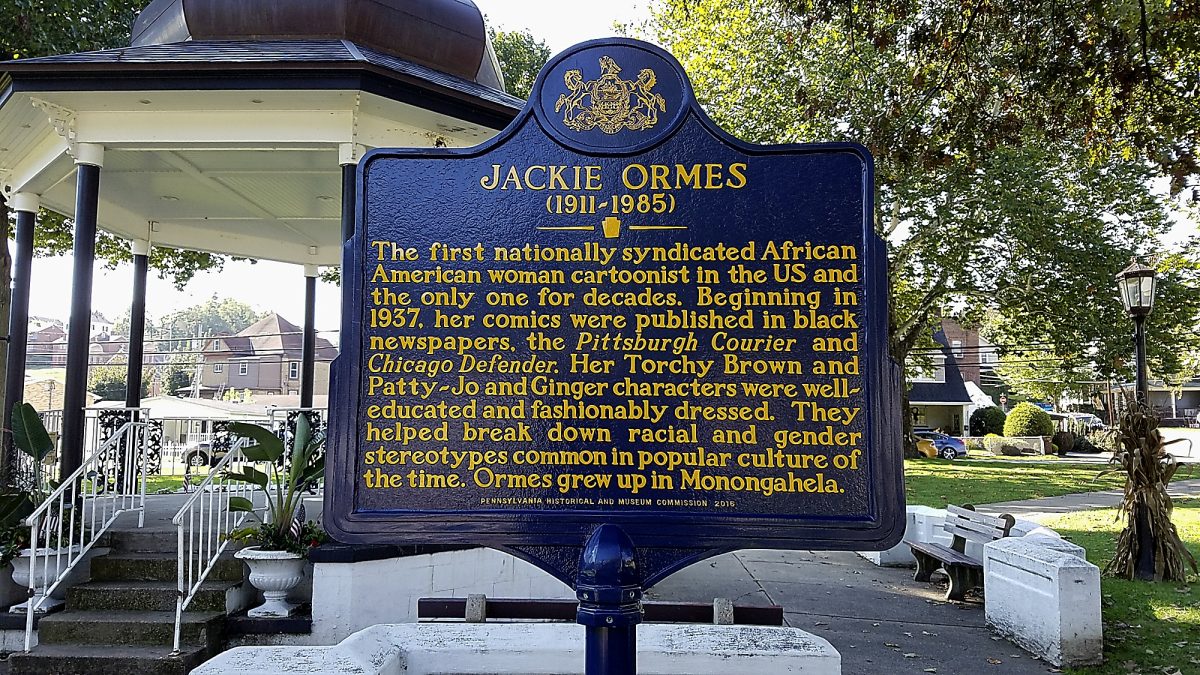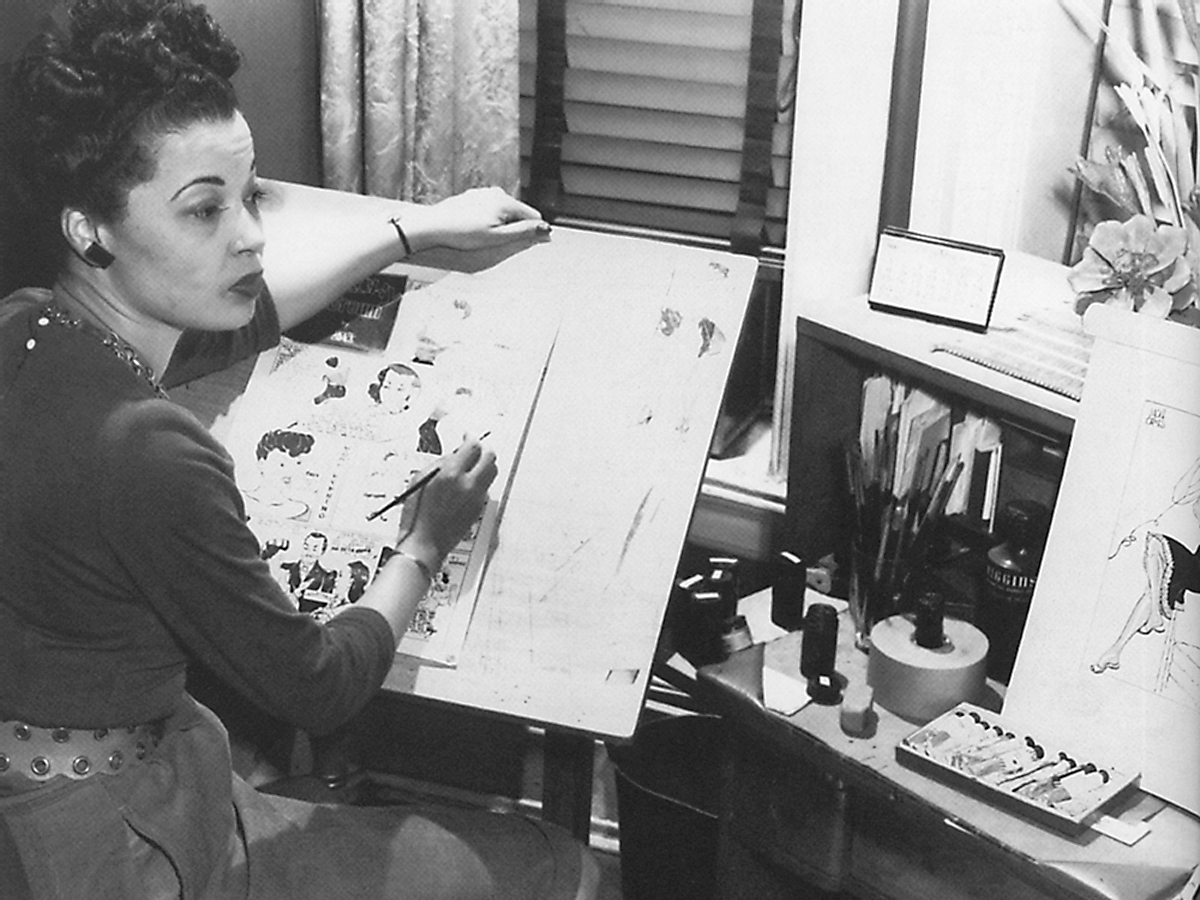Monongahela marker
MONONGAHELA – Jackie Ormes was already a standout artist and journalist when she attended Monongahela High School in the late 1920s.
She drew cartoons that appeared in her high school yearbooks and was working at a prominent black weekly newspaper in Pittsburgh as a writer and proofreader before graduating and becoming the nation’s first black female syndicated cartoonist.
“She finally gave black girls something positive to identify with,” said Susan Bowers, president of Monongahela Area Historical Society, referring to Ormes, whose legacy is honored on a new Pennsylvania Historical and Museum Commission marker in the city’s Chess Park.
Ormes was born Zelda Mavin Jackson in 1911 in Pittsburgh to William Winfield and Mary Brown Jackson. Mary Jackson became a widow when her husband was killed in an automobile crash.
Ormes and her sister relocated to Monongahela with their mother after she married Porter Simmons, whose nephew Paul Simmons became a federal court judge in Pittsburgh, said Terry Necciai, a Mon Valley historian from Monongahela.
“They flourished in Monongahela,” Bowers said.
Ormes’ cartoons appeared in the Pittsburgh Courier and The Chicago Defender, featuring well-dressed, sophisticated black characters who were in sharp contrast to those that were featured in mainstream white newspapers. She created Torchy Brown, a young, adventurous woman from Mississippi who made it to the stage of the Cotton Club, and Patti-Jo, who was “known for politically scathing commentary,” according to biography.com.
Her cartoons took on such issues as racism before the Civil Rights era, pollution in poor neighborhoods and educational injustices. Her art helped to break down racial and gender stereotypes “common in popular culture of the time,” the PHMC marker states.
Until that time, blacks were portrayed with racist, derogatory characters in newspaper advertisements and other illustrations, Bowers said.
She said Ormes gave her audience characters who exhibited “positive self-images.”
Ormes also “hobnobbed with Duke Ellington” and other famous black Americans of her time after relocating to Chicago.
“She was high society,” Bowers added.
The FBI maintained a file on Ormes because she attended events that the agency believed were tied to the Communist Party, even though she was not a member, according to biography.com. She died in December 1985 from a cerebral hemorrhage.
The frame house at Ninth Street and Marne Avenue where she lived in Monongahela is still standing, Necciai said.



